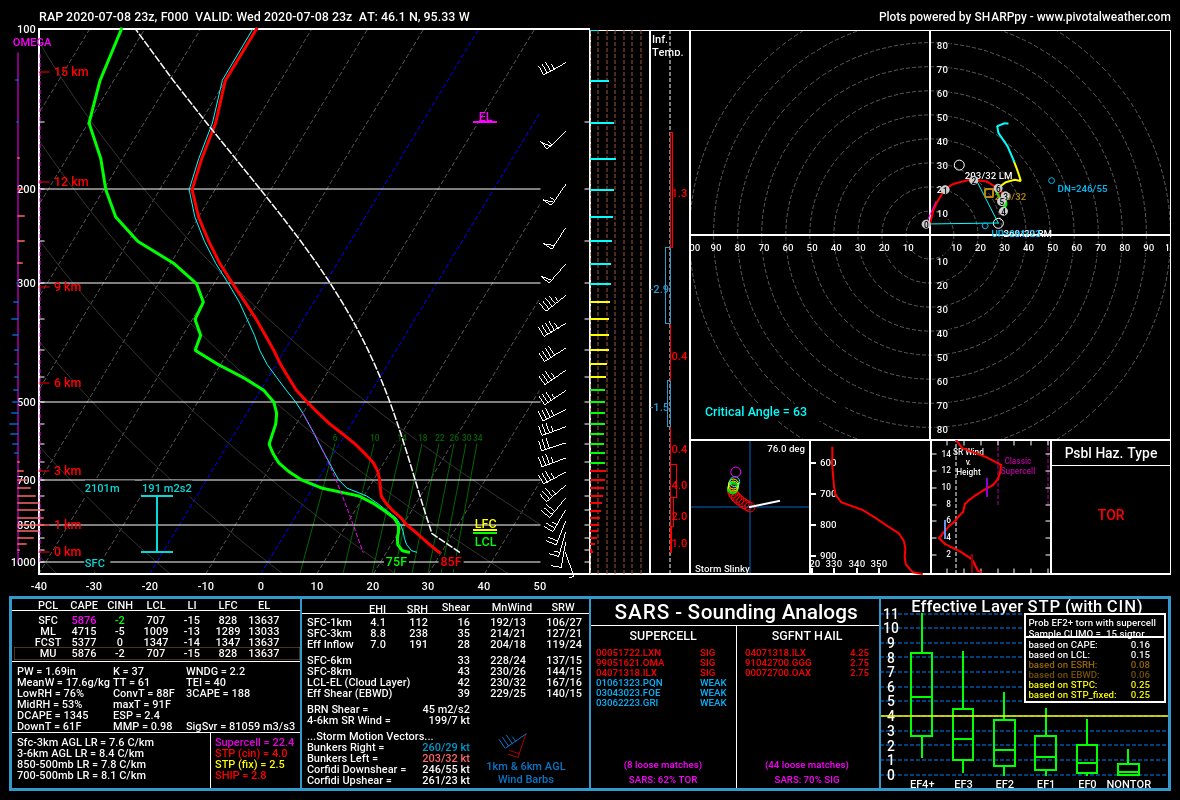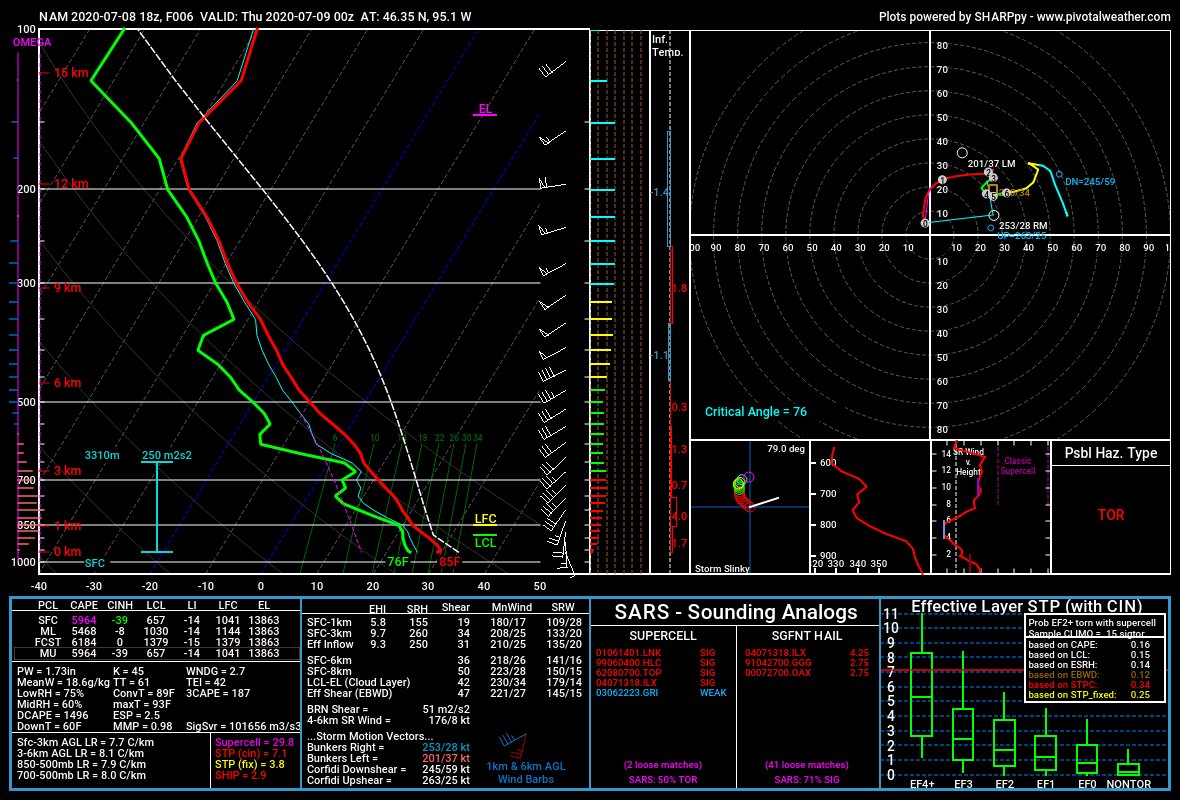Today& #39;s MN tornado was a stunning example of a "small but mighty" vortex. Why may this have happened?
Some speculations:
First, hodographs were reminiscent of other quasi-minisupercellular events which produce surprisingly longer-tracked tornadoes...
Some speculations:
First, hodographs were reminiscent of other quasi-minisupercellular events which produce surprisingly longer-tracked tornadoes...
The parent supercell was indeed small and rather LP. Leading theory suggests that tornadoes born within smaller updrafts tend to be... smaller. This coupled with steep lapse rates & some low/mid-level dryness may have further discouraged wide updrafts and tornadoes.
There was definitely some near-sfc SRH that could have assisted in its formation but nothing to write home about; however, very high low-level CAPE likely especially aided any spurious vortex to rapidly amplify to tornado strength.
The tornado appeared to occlude early on, also furthering my speculation that streamwise vorticity ingestion wasn& #39;t really necessary in its maintenance.
In fact, the tornado spent a lot of its life occluded/well detached from the parent supercell. In this way it could not widen.
Due to outside entrainment, the supercell itself obviously did not take advantage of the extreme CAPE. However...
Due to outside entrainment, the supercell itself obviously did not take advantage of the extreme CAPE. However...
I wonder if this occluded, tight and strong closed circulation was able to create its own "entrainment-free zone" where it was allowed to nearly fully access what really was anomalous CAPE for this type of event and in doing so become apparently quite intense.
Other thoughts?
Other thoughts?

 Read on Twitter
Read on Twitter



